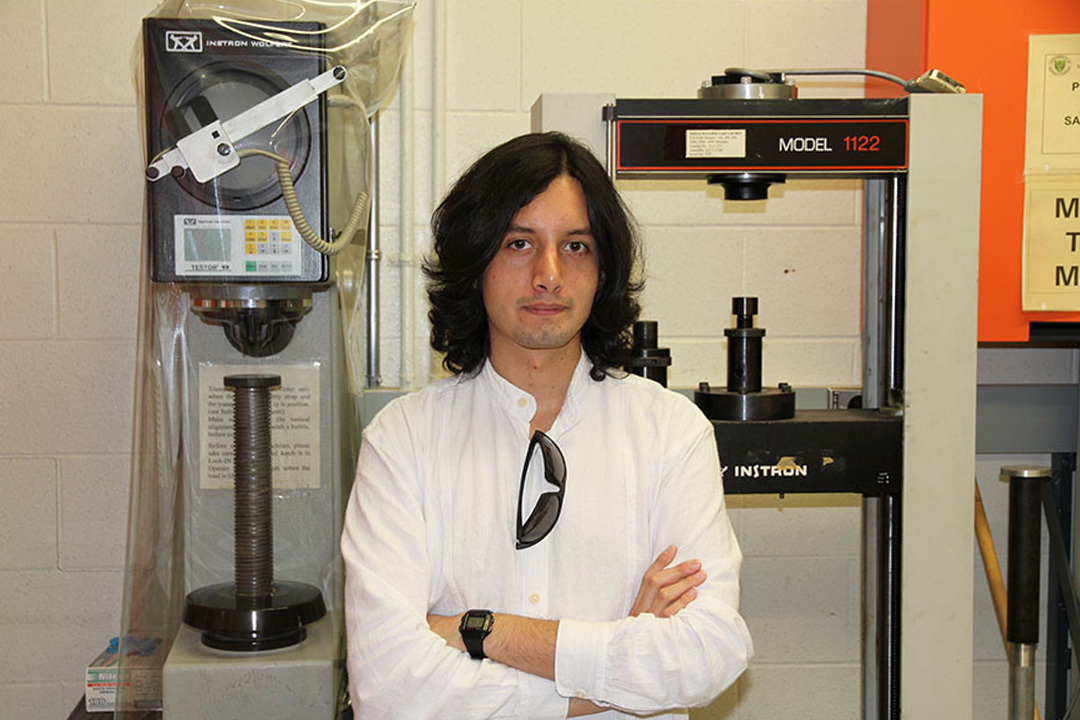
From Ecuador for engineering education
He travelled 6,388 kilometres from South America to get here, but the journey has been well worth it for Álvaro Espinosa.
By James ShewagaThe 21-year-old University of Saskatchewan (U of S) student from Ecuador faced an array of adjustments—most notably climate and culture—when he first came to Canada, but eventually found himself at home on campus.
“I had to face some challenges myself and that helped me grow a lot, I think,” said Espinosa, who is from the Ecuadorian capital city of Quito, located only 25 kilometres away from the equator. “It’s been a great experience and it has definitely changed me.”
Espinosa was one of 3,033 International students—out of total enrolment of 23,691—at the U of S in the 2015-16 academic year, including 42 scholars from Ecuador. He initially applied, and was accepted, at a variety of universities across North America, but chose the U of S after weighing all of his options.
“I was looking for a great program in mechanical engineering and (the U of S) has a good internship program, plus I received a lot of financial help too,” said Espinosa, whose command of English comes from his mother, who taught him the language from an early age. “I was looking for a really high quality education and that is what I have found here.”
Espinosa has established himself as one of the top students in the College of Engineering, and has made the Dean’s Honour Roll in 2015 and 2016 while posting a cumulative grade point average of 90 per cent through his first three years of study. He was also invited to join the prestigious Golden Key International Honour Society— open to only the top 15 per cent students in their particular program or college—whose membership includes the likes of former President Bill Clinton and Nobel Peace Prize recipient Desmond Tutu.
“Álvaro is incredibly engaged and a very hard worker. He is genuinely interested in his research and asks very intelligent, in-depth questions,” said Emily McWalter, an assistant professor of mechanical engineering at the U of S. “I believe we will hear great things from him in the future.”
McWalter and associate professor of mechanical engineering J.D. Johnston employed Espinosa, through the Undergraduate Student Research Assistantships program, to work over the summer in their Musculoskeletal and Orthopaedic Biomechanical Imaging Laboratory on a biomechanics research project that he quickly took a lead role in.
“Degenerative diseases, such as osteoarthritis, can affect anyone at any point in their lives.” said Espinosa. “Currently, these diseases have no cure and they are usually not identified until after major damage occurs. However, the disease can be better treated if detected earlier, which is potentially possible via quantitative magnetic resonance imaging. So, I had to design a MR-compatible device that simulates daily activities (mainly twisting, compression and tension) in knee specimens, since this cannot be imaged directly in live subjects.”
His work on the project— designing a loading device for cadaver knee specimens—has proven promising and could help answer some important research questions, according to McWalter.
“He has come up with some great designs,” she said. “This is a long-term project and he really got the ball rolling. Next we will choose a final design and build a prototype. . . Hopefully it will be used in the MR scanner within the next year.”
So what’s next for Espinosa as he finishes his bachelor’s degree?
He is looking to garner more real-world experience by taking part in the Engineering Professional Internship Program. In his spare time, he also wants to get involved in the U of S Huskie Motorsports Team, which designs Formula SAE race cars to compete against teams from around the world.
“I am hoping to get into that this year because I haven’t had much time to go into this club before, but that’s something I am really, really interested in and it lines up with my future goals,” said Espinosa, who plans to complete his master’s in Canada, before possibly heading overseas to work in Germany.
“If I go into the aerodynamics field, I would want to later go to Germany because the automotive industry is really developed there and I would love to become an auto- motive designer or an aerospace engineer at one of those firms,” said Espinosa, who has also taken language lessons to prepare for the move. “That’s one of the reasons why I started learning German in the first place, so that I could go there eventually. So that’s the long-term plan.”

